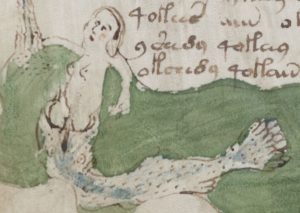Though I’ve blogged about the Tamam Shud / Taman Shud case before, it’s still very far from closed. The man found on South Australia’s Somerton Beach in December 1948 remains unidentified, the nature of his death continues to be unresolved, his relationship with the nurse “Jestyn” is still not fully locked down, while as for the curious note tucked into his pocket…
MRGOABABD
MLIAOI
MTBIMPANETP
MLIABOAIAQC
ITTMTSAMSTGAB
…it’s as mysterious as ever.
Arguably the best starting point for people intrigued by this whole story is to watch a 1978 documentary on the subject from Australia’s ABC channel. Handily, it has been posted in three 10-minute sections on YouTube: 1/3, 2/3, and 3/3. Because so much of the police evidence has been destroyed over the years, the great thing about this film is that you get to actually see things in The Unknown Man’s suitcase (right at the start of part 2), which I for one found particularly interesting.
What I suspect you’d really want to leaf through next would be a dossier on the case, carefully laid out by a former policeman who had been assigned to it, and who went to some lengths to be factual, not judgmental. If my guess is even remotely close, then I’d say you simply have to get yourself a copy of G. M. Feltus’ (2010) book “The Unknown Man: A suspicious death at Somerton Beach“.
Yes, Gerry Feltus was indeed a policeman assigned between 2002 and 2004 (when he retired) to the Somerton Man cold case: and I think he does an admirable job of bringing together both the numerous strands of (often painfully thin) evidence and the various claims and theories as to the dead man’s identity.
It’s entirely true that his lengthy roll call of dud theories in the middle of the book can get very slightly wearing: but he’s clearly trying to give armchair mystery solvers everything they could reasonably need to get under the skin of this peculiar case, and so arguably couldn’t present it in any other way. Recommended!
Of course, there’s an extensive Wikipedia page for you to go through too (frankly, I’d recommend pouring yourself a nice glass of lightly-oaked Australian Chardonnay and watching the ABC documentary before you do anything so completist), though it’s not really a patch on Gerry’s 200+-page book.
Incidentally, there’s a lot of recent speculation that the Unknown Man may well have been the father of Jestyn’s son (there’s now even talk of exhuming bodies and performing DNA tests). Though my own belief is that this is – for entirely separate reasons – most likely true, I also think that this is missing the point. The right first step would be to do much more to explore the Somerton’s Man’s life before his death: thanks to Gerry Feltus, I think we can tell a great deal about him, and make some well-educated hunches.
In a few days’ time, I’ll post about what I think the odd cipher message contains, as well as my thoughts on the Unknown Man’s life, his travels in Australia after the Second World War, and his premature death (yes, I’m quite sure he was poisoned). But that’s by the by: for now all that’s important is that I think anyone with an interest in this enduring cipher mystery should buy themselves a copy of Gerry’s book from his Australian website and try to make up their own mind!

